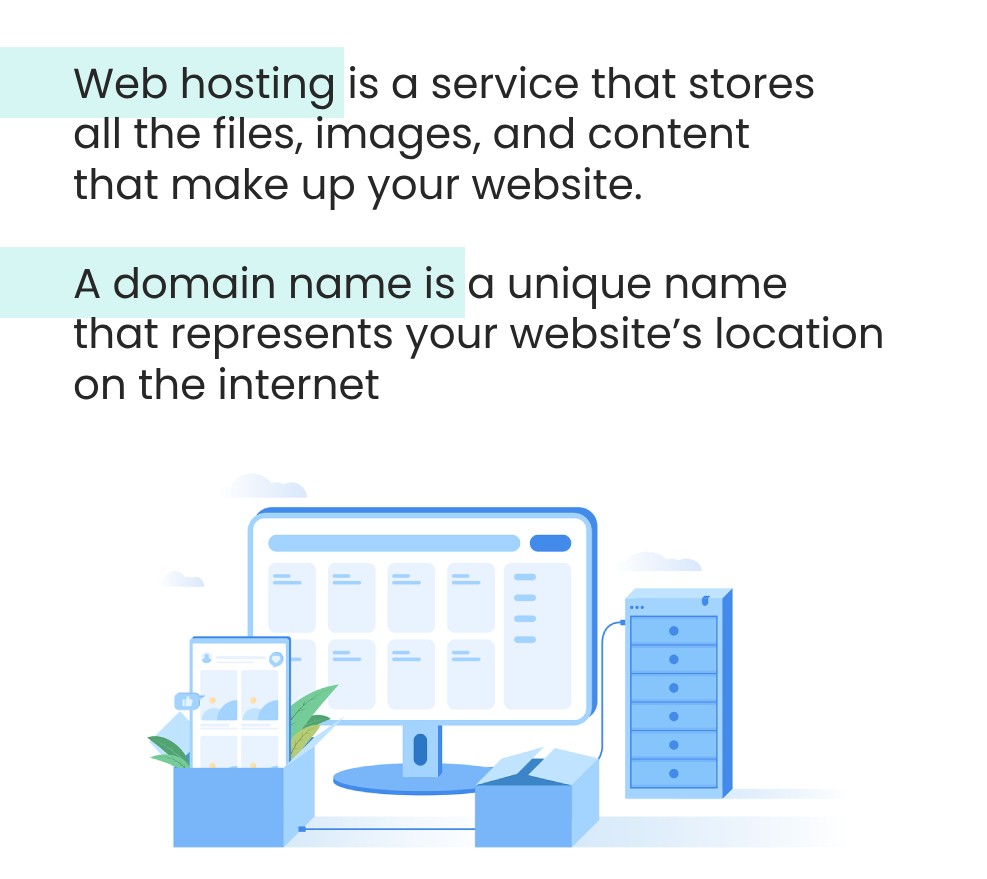A domain name and web hosting are both essential for a website to function and be accessible online. A domain name acts as the address that users type into their browser to find your site, while web hosting provides the storage and server space where your website’s files are stored.
Without a domain, visitors wouldn’t know how to reach your website, and without hosting, there would be no place for your website’s data to exist. In short, both are necessary—your domain points users to your hosting server, and the hosting server delivers your website’s content to their screens.
Together, they ensure your website is live, accessible, and ready to welcome visitors.
Recent articles
What is a Domain Name?
A domain name is a unique, easy-to-remember name that represents your website’s location on the internet. Instead of typing a string of numbers (called an IP address), users can simply type something like www.beauchampwebdesign.co.uk to access your site. This makes it much simpler for people to find and remember your website.
The Price of a Domain
The cost of a domain name can vary depending on the domain registrar and the type of domain you choose. For example, a .com domain typically costs between $10 to $20 per year, but prices may differ based on the provider. At the time of writing this article, a .com domain costs $8.88/year on Spaceship.com, while on Porkbun the price is $11.06/year.
What is Web Hosting?
Web hosting is a service that stores all the files, images, and content that make up your website. These files are stored on a special computer called a server, which is connected to the internet 24/7. When someone types your domain name into their browser, the hosting server delivers your website’s files to their device, allowing them to view your site.
Think of it like this: if your website were a physical store, the domain name would be the address, and the hosting would be the actual building where your store operates.
The Cost of Web Hosting
The price of web hosting can vary significantly depending on the hosting provider and the type of plan you choose. For the websites I create shared hosting is usually sufficient and costs around $30 per year on average. This option is affordable and works well for small to medium-sized websites. However, if a client prefers more advanced features or higher performance, they can opt for more expensive hosting plans, such as VPS or cloud hosting, which offer greater resources and scalability.
The Structure of a Domain Name
Domain names are made up of two main parts:
The Name. This is the part you choose, like “yourbusiness” in www.yourbusiness.com. It should reflect your brand, business, or purpose.
The Extension. Also known as the Top-Level Domain (TLD), this is the part that comes after the dot, such as .com, .net, or .org. The most common TLD is .com, but there are many others tailored to specific industries or regions (e.g., .co.uk, .photography, .store).
Domain Registration
Once you’ve chosen your domain name, you’ll need to register it through a domain registrar. This process involves paying a small annual fee to secure your domain. Think of it as renting the address for your website—you’ll need to renew it each year to keep it active.

Why Do You Need Web Hosting?
Link building plays a pivotal role in SEO and overall online visibility for several reasons:
Storage
Hosting provides the space to store all your website’s data, from text and images to videos and code.
Accessibility
It ensures your website is always available online, so visitors can access it anytime, anywhere.
Performance
Good hosting ensures your website loads quickly and runs smoothly, which is crucial for keeping visitors engaged.
Types of Web Hosting
| Type of Hosting | Short Description | Suitable For |
|---|---|---|
| Shared Hosting | Shares server resources with other sites. | Small websites or beginners. |
| VPS Hosting | Dedicated portion of a shared server. | Growing websites with moderate traffic. |
| Dedicated Hosting | Entire server for one website. | Large websites with high traffic. |
| Cloud Hosting | Resources spread across multiple servers. | Websites needing scalability & reliability. |